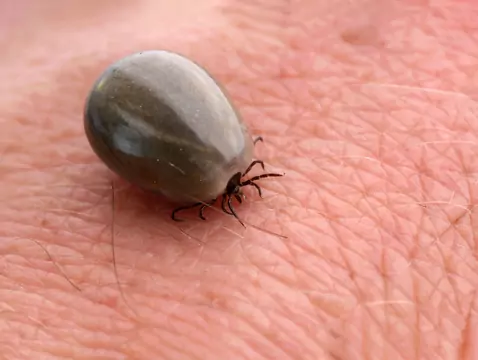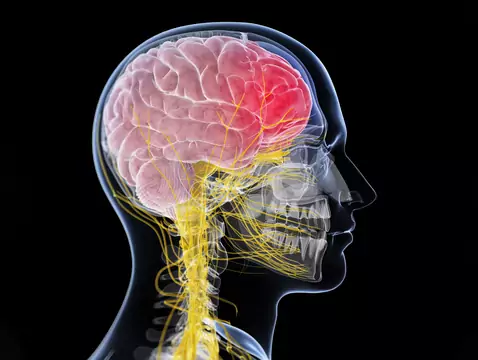
Will an epilepsy drug help multiple sclerosis patients?
Recent research by Dr Raju Kapoor from the UK shows that a drug to help treat/therapy epilepsy may help patients with multiple sclerosis (S). Studies are currently being conducted in this regard.

Autologous haematopoietic cell transplantation a new therapy for multiple sclerosis
Multiple sc lerosis is a chronic autoimmune disease that attacks the central nervous system. Ways to cure it are being sought all the time. Can a haematopoietic cell transplant stop the disease or...

Myoclonus
Myoclonus, or fast, short, involuntary movements, are the result of the synchronisation of agonistic and antagonistic muscle actions. Myoclonus can be generalised, focal and segmetric and can have...

Who can be affected by brain diseases?
Brain diseases can affect anyone regardless of age (they appear in newborn babies) gender or education. Research is ongoing to understand why these diseases develop. The number of brain diseases...

Neurophysiological instrumental tests
Two types of tests - neurophysiological instrumental tests and coding tests - can be used to investigate the function of the nervous system in clinical practice. Instrumental tests are performed with...

Stroke and loss of consciousness
Haemorrhagic stroke accounts for 10-12% of all strokes. It is usually characterised by a severe clinical course associated with destruction of parts of the pathways and centres and highly increasing...

Chronic inflammatory demyelinating polyneuropathy
Chronic inflammatory demyelinating polyneuropathy manifests itself in patients with a symmetrical distribution of both sensory and motor disturbances. It affects the distal and proximal parts of the...

Mitochondrial diseases - causes, symptoms, diagnosis, treatment
Mitochondrial diseases are diseases with a genetic basis. They are caused by various abnormalities in the normal functioning and structure of the small structures present in our body, such as...

Nervous migraine - causes, symptoms, diagnosis, treatment
More and more people, both men and women, are seeing their doctor with severe headaches that do not go away after taking a painkiller. They may be accompanied by other symptoms such as eye pain,...

von Hippel-Lindau syndrome - causes, symptoms, diagnosis, treatment
The von Hippel-Lindau syndrome, or retinoblastoma , is one of the rare diseases with a genetic basis. It is inherited in an autosomal dominant manner. It belongs to the phakomatosis group. The...

Spinal muscular atrophy - subdivision, classification
Spinal muscular atrophy is a genetically determined disease. It is passed on from generation to generation in an autosomal recessive manner. There are currently several types of the disease. In each...

Consciousness after craniocerebral injury
Cranio-cerebral injuries are one of the causes of neurological syndromes, which greatly limit the patient's performance and function and may even cause death. It is extremely important to monitor the...

Neuroborreliosis - a tick-borne disease
Lyme disease can present with central and peripheral nervous system involvement. The clinical picture, together with diagnosis and treatment, is outlined below.

Problem with constant numbness in the hands-is it dangerous?
Very often, patients with hand numbness do not know which doctor to see. It is a very non-specific symptom, which can unfortunately be a sign of many diseases. It can also be caused by nervousness,...

Cerebral gigantism - causes, symptoms, diagnosis, treatment, differentiation - part 2
Cerebral gigantism, is otherwise known as Sotos syndrome. It is a rare congenital syndrome, genetically determined, inherited in an autosomal dominant manner. The pathophysiological mechanisms...

Cerebral gigantism - causes, symptoms, diagnosis, treatment, differentiation - part 1
Cerebral gigantism, is otherwise known as Sotos syndrome. It is a very rare congenital syndrome that is genetically determined. The disease is inherited in an autosomal dominant manner and was...

Vascular post-stroke dementia - causes, symptoms, diagnosis, treatment
After a stroke, a patient may develop what is known as post-stroke dementia. Its symptoms are highly variable. They depend directly on the causes that led to the stroke (haemorrhagic, ischaemic)....

Spinal muscular atrophy and how it is inherited
Spinal muscular atrophy(SA) is a rare genetic disease. How is it inherited?

Closer and closer to understanding the causes of autism
Research is ongoing to understand the causes of autism and to develop effective treatments.

Spinal muscular atrophy
Spinal muscular atrophy (SA) is a genetically determined disease that occurs very rarely. It occurs due to the destruction of the anterior nuclei of the spinal cord and the nucleus accumbens. The...




